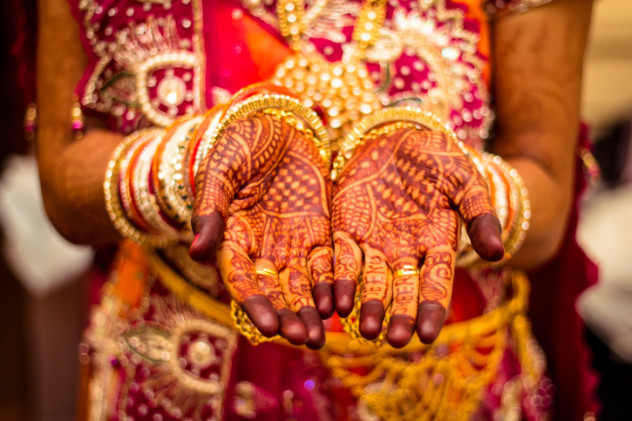1. Bushido And Seppuku
 Bushido
Bushido, the
warrior code of Japan, emphasizes strength, loyalty, and integrity. Some analysts and academics have recommended its implementation
in the world of business, given the many irregularities that have faced
corporations in the past and present. Conducting business inspired by bushido means working effectively and honestly, with the best interests of your superiors and the public in mind.
Seppuku, or ritual suicide as an alternative to defeat
introduced by samurai, has a less vaunted reputation. It was
particularly vilified in the wake of World War II, when thousands of
Japanese soldiers carried on the practice by choosing to take their
lives rather than surrender, but it
continues to this day
in many parts of Asia. Notable instances include the suicides of Yukio
Mishima while protesting Japan’s military policies in 1970 and Masaharu
Nonaka after he was laid off by his company in 1999.
In Korea, many people feel unbearable guilt and shame in the wake of
great tragedy and see no other choice but to end their lives. When the
MV Sewol sunk on April 16, 2014 and left hundreds of students dead or missing, the vice principal was so intensely
plagued by guilt that he committed suicide.
2. Pearly Whites And The Tooth Fairy

There are several variations
of the tale of the tooth fairy. In Denmark, the tooth fairy is called
Tann Feen. In many cultures, the mythical figure is actually a mouse,
known in France as La Petite Souris, in Spain as Ratoncito Perez, and in
Colombia as El Raton Miguelito.
In Greece and Mauritania, a child does not simply leave his tooth
underneath his pillow. Instead, children throw it as hard and as high as
they can toward the roof of their home. In Greece, this provides good
luck and strong teeth. In Mauritania, if there’s a rooster crowing by
daybreak, he could keep the tooth.
In Jamaica, children are told horrible tales
about a calf that will take them away unless they place their lost
tooth in a can and shake it vigorously. The noise is said to drive the
calf away. Malaysian children take a more spiritual view of their lost
teeth—they bury them in the ground, as what was once part of the body
must be returned to the Earth. In Turkey, lost teeth can be used to
convey parents’ expectations to their children. For example, if they
want their child to be a doctor, they might bury the teeth near a
hospital.
3. Alcohol And The Devil

Although stereotypes can be harmful, it is true that Russia is one of
the highest-ranked countries in the world in alcohol consumption. The
country’s love of vodka is also its leading cause of death, from liver disease and alcohol poisoning to fatal accidents and crimes.
Since it’s such an integral part of their culture, there are many rules of etiquette
surrounding drinking in Russia. For instance, you can’t place a glass
of alcohol back on the table after a toast—it should be bottom’s up and
empty. Arriving late for dinner means that you have to drink a full
glass of vodka, no questions asked, as you’ll have to catch up with the
rest. Between the first and second shots, there must be no interruptions
whatsoever. Lastly, you should never make the mistake of offering a
toast with an empty glass. If you do, you’ll have to drink the entire
bottle.
Russians also love to swear, but their custom is steeped in
superstition. It is said that when you curse another person’s health in a
manner without malice, you should spit three times
over your left shoulder. This symbolically spits in the eye of the
devil, preventing bad omens or a temptation of fate. If the curse is
made in writing, you should write the guttural sound, “Tfu, tfu, tfu!”
4. Arriving Late

In many parts of the world, arriving late to a social gathering is
considered quite rude, but that’s not the case in South America. In
Chile, if the host says that dinner will be served at 8:00 PM, guests are expected
to arrive around 8:15 or even as late as 8:30. Arriving on time or
earlier could mean catching the host unprepared, and the offender will
be regarded as “too eager” for a meal. In Ecuador, arriving 15–20 minutes late is also considered being “on time,” and Brazilians consider meeting times “elastic,” showing up whenever they please.
Even parts of the United States have adopted these traditions,
because they have attracted large populations of immigrants from these
countries who brought their customs with them. For instance, in Miami,
it’s more common for dinner to be served late and guests to be less punctual than in other parts of the country.
5. Mudras
 Mudras
Mudras are seals, marks, or gestures
unique to Hinduism and Buddhist cultures, most notably India. No fewer
than 500 different meanings can be expressed by the way a person moves
their hands and fingers. These movements are believed to allow the
individual to control the flow of
prana,
or life energy, and focus their attention toward a certain goal. They
can be seen in statues, paintings, dances, plays, yoga, and meditative
techniques.
The
gyana mudra, wherein the thumb and index fingers touch
while the other fingers extend away from the palm, is said to promote
mental clarity and calmness, making it the most popular
mudra to use for meditative purposes. The
abhaya mudra
(simply raising one’s right hand with an open palm and fingers extended
straight up) shares an almost universal meaning with other symbolic
gestures of various religions and cultures. It’s related to the heart
chakra and communicates openness and honest intent. The
agni mudra
(the thumb touching the middle finger while the rest extend away from
the palm) symbolizes fire and is said to aid the digestive process.
6. Bayanihan

Another unique aspect of Filipino culture is
bayanihan, the practice of literally moving an entire home
to a new location. The villagers gather to lift up the structures,
carrying them over quite a distance. In some cases, it’s done to avoid
damage to the home from impending floods or landslides, but it’s
sometimes done simply to oblige a good neighbor.
Bayanihan occurs mostly in rural provinces, since the abodes
found in these areas are made of lighter materials like bamboo and nipa
palm wood. While it does take place in urban areas, it is limited to
moving items such as hardware, playground contraptions like swings and
seesaws, and basketball courts.
7. Henna Weddings And The Blackening

Islamic weddings are steeped in centuries-old traditions and rituals.
For one thing, it is generally believed that the best day for the
ceremony to take place is on Thursday, since Friday is the holy day
among Muslims. Another tradition is
mehndi, or “henna,” night. Two nights before the wedding, the bride is surrounded by women from her side of the family, who paint designs on her hands, arms, and feet. This was to symbolize the bride’s entrance to womanhood. Some symbols are also meant to provide luck and fertility for the woman.
While henna night is an artistic and beautiful display, the same
can’t be said for a custom practiced in parts of Scotland called “the
blackening.” It involves friends of the bride and groom tying the two
together in bathtubs, large crates, or behind pickup trucks before parading them through the streets
to be pelted by passersby with an array of disgusting material.
Feathers, soot, rotten eggs, curry, shoe polish, and mud are just a few
of the horrors in which the couple can expect to be covered. This
fun-filled tradition is believed to ward off evil spirits, and it also
provides a bonding moment for the couple that symbolizes the hardships
they are to endure and conquer together.
https://listverse.com/2014/10/11/10-unique-customs-youll-only-find-in-specific-cultures/

















